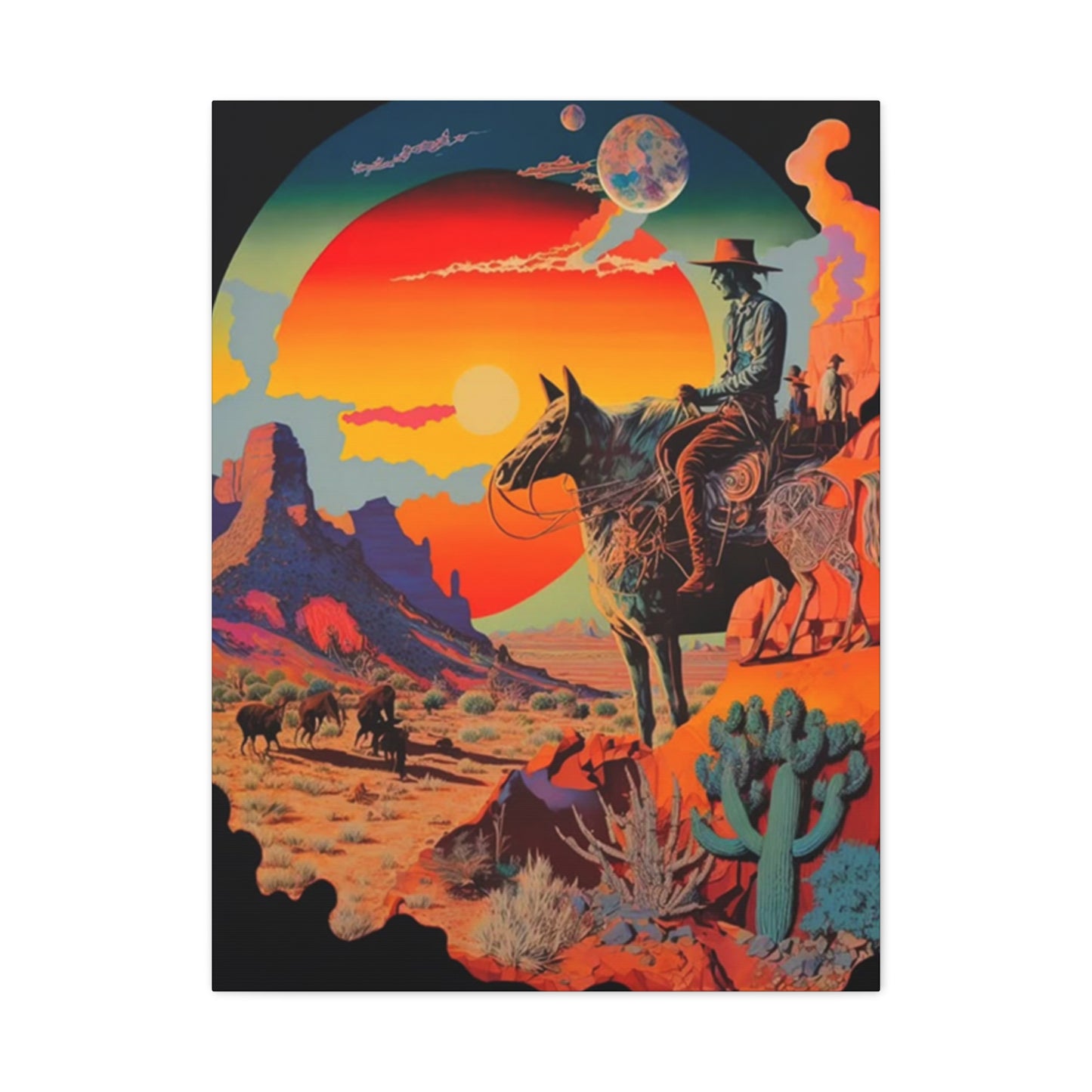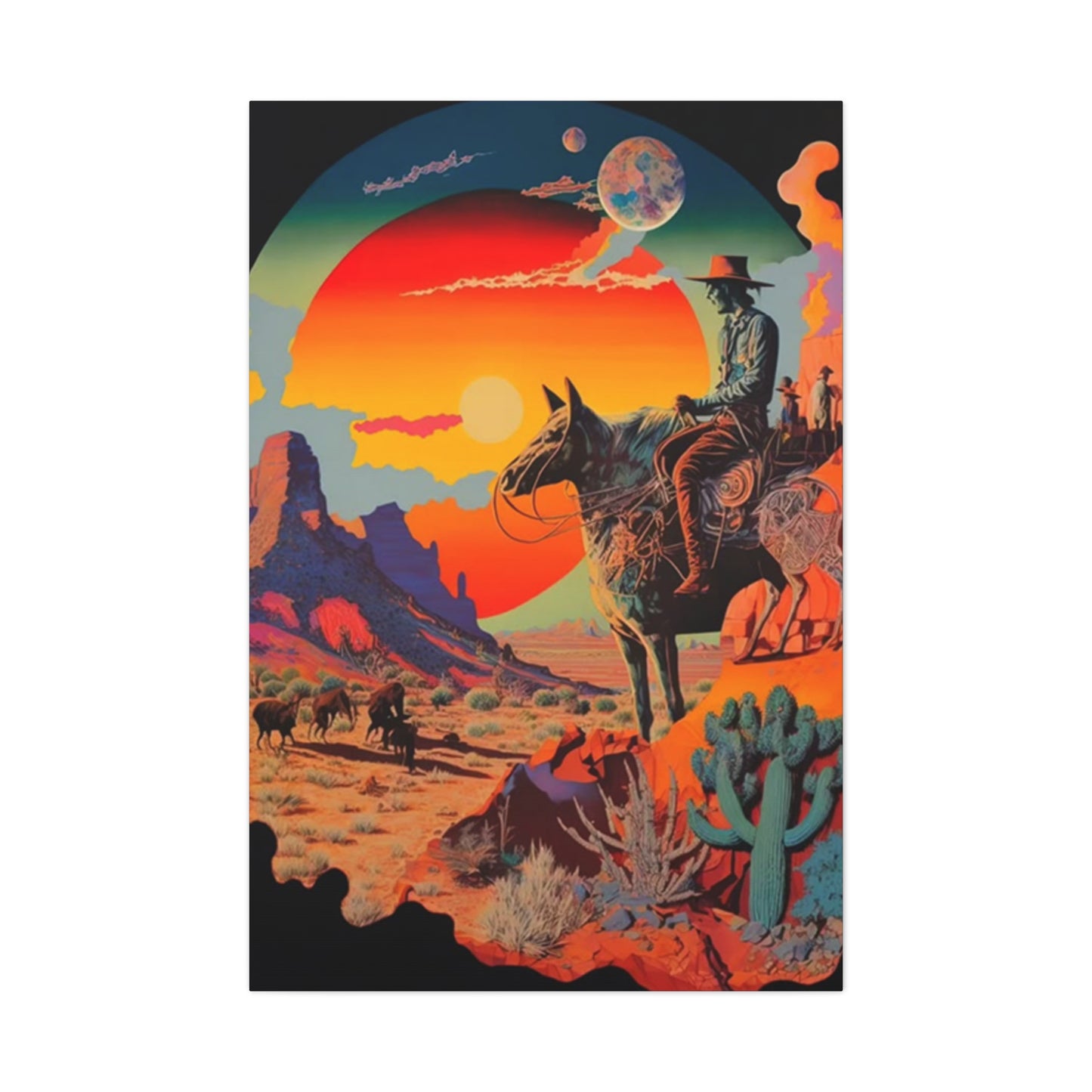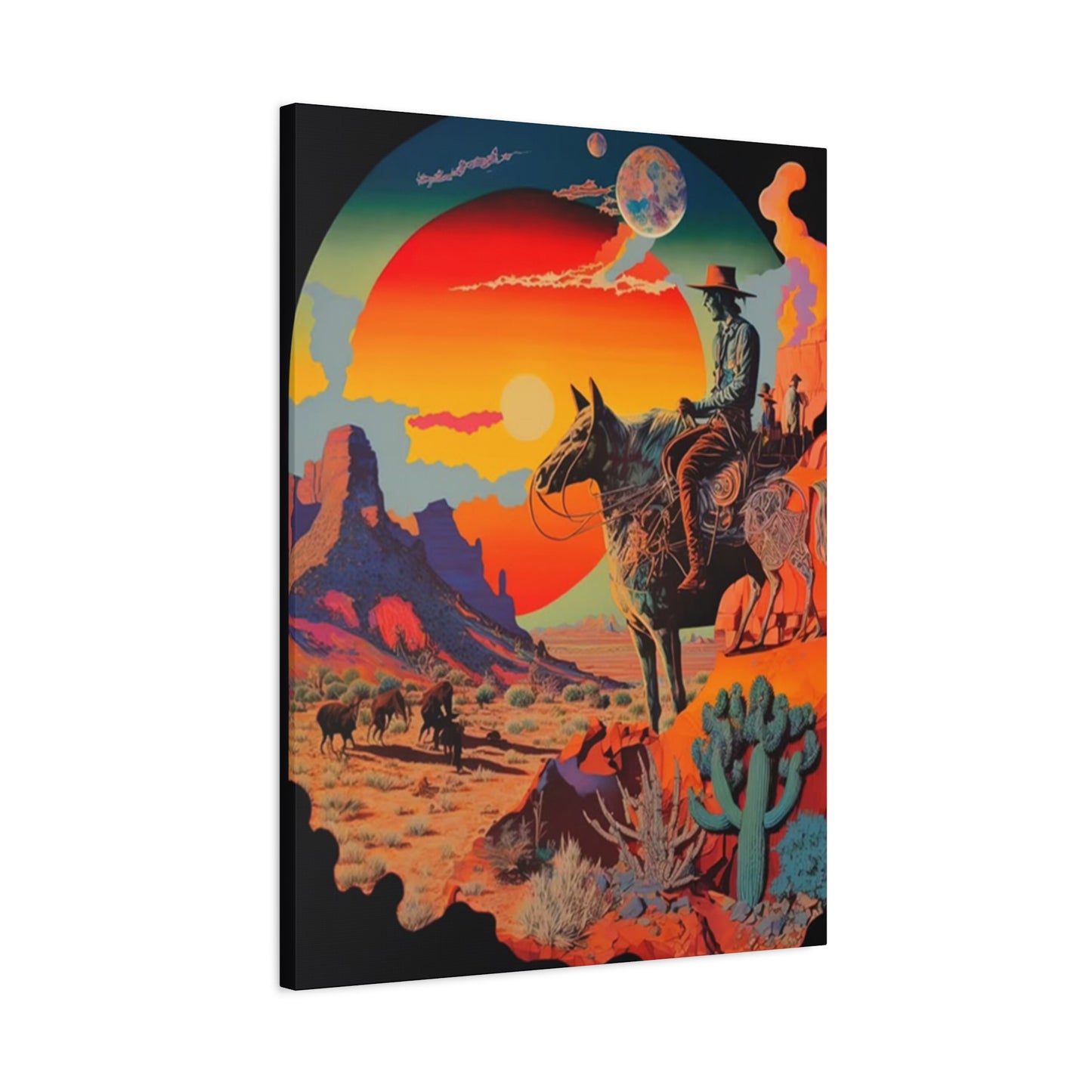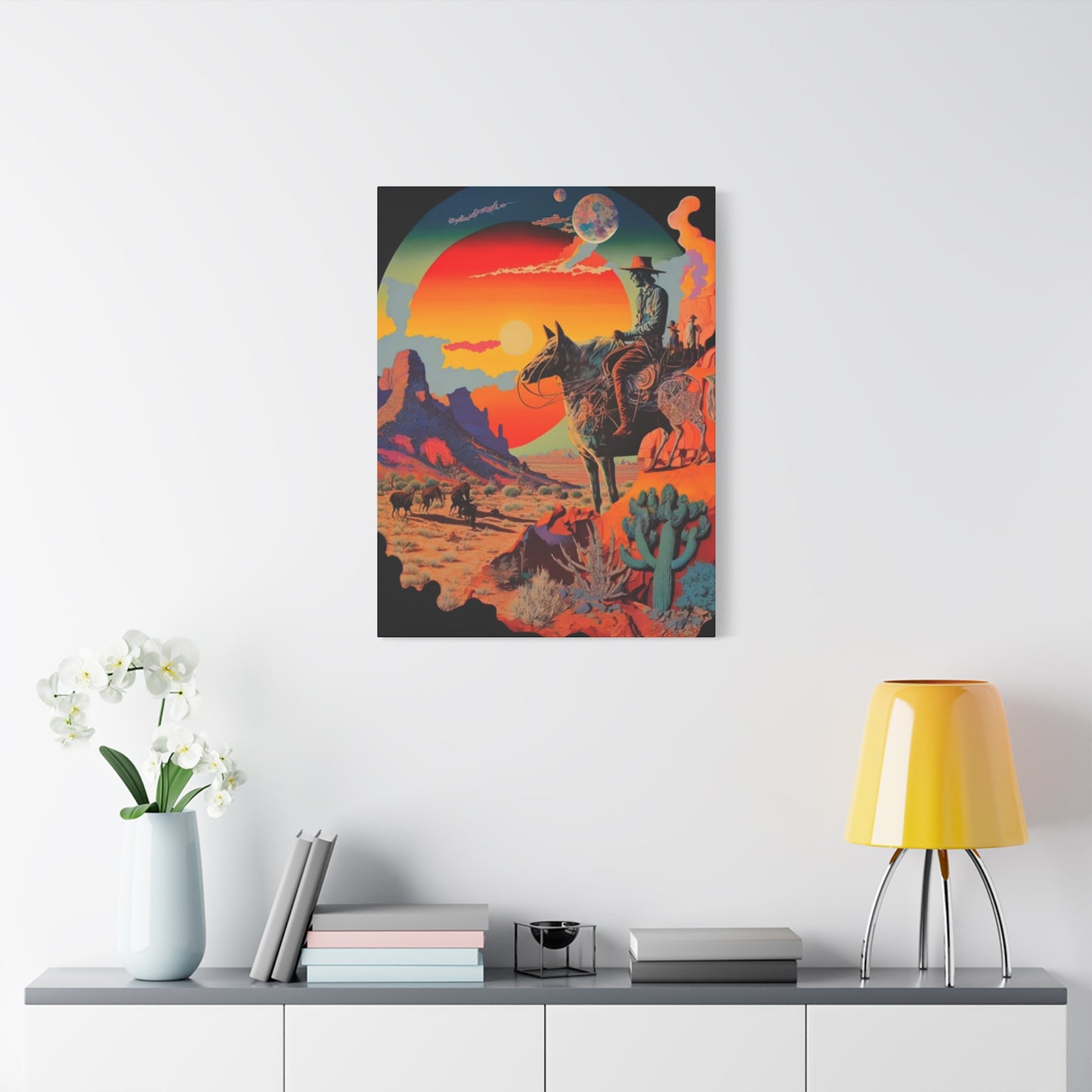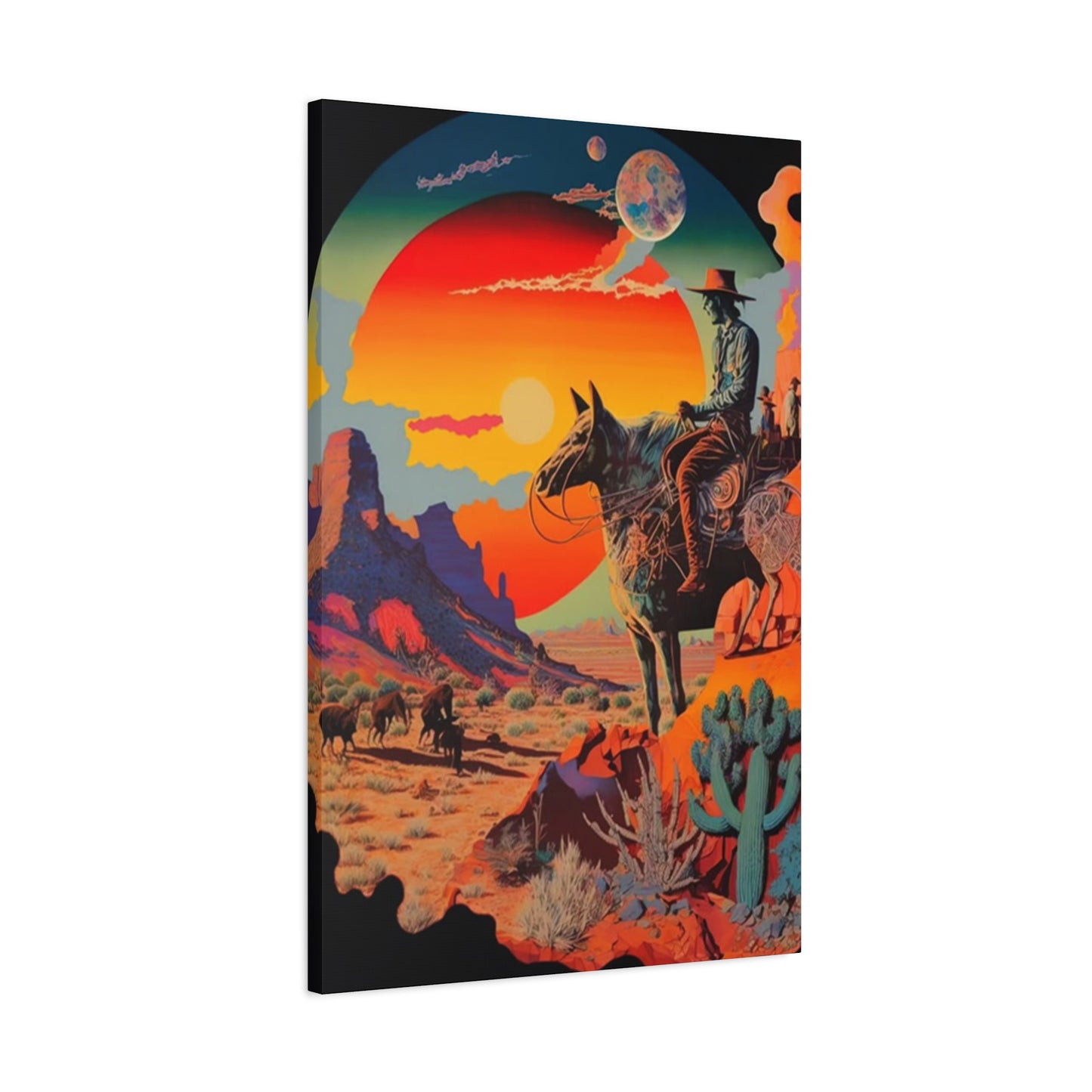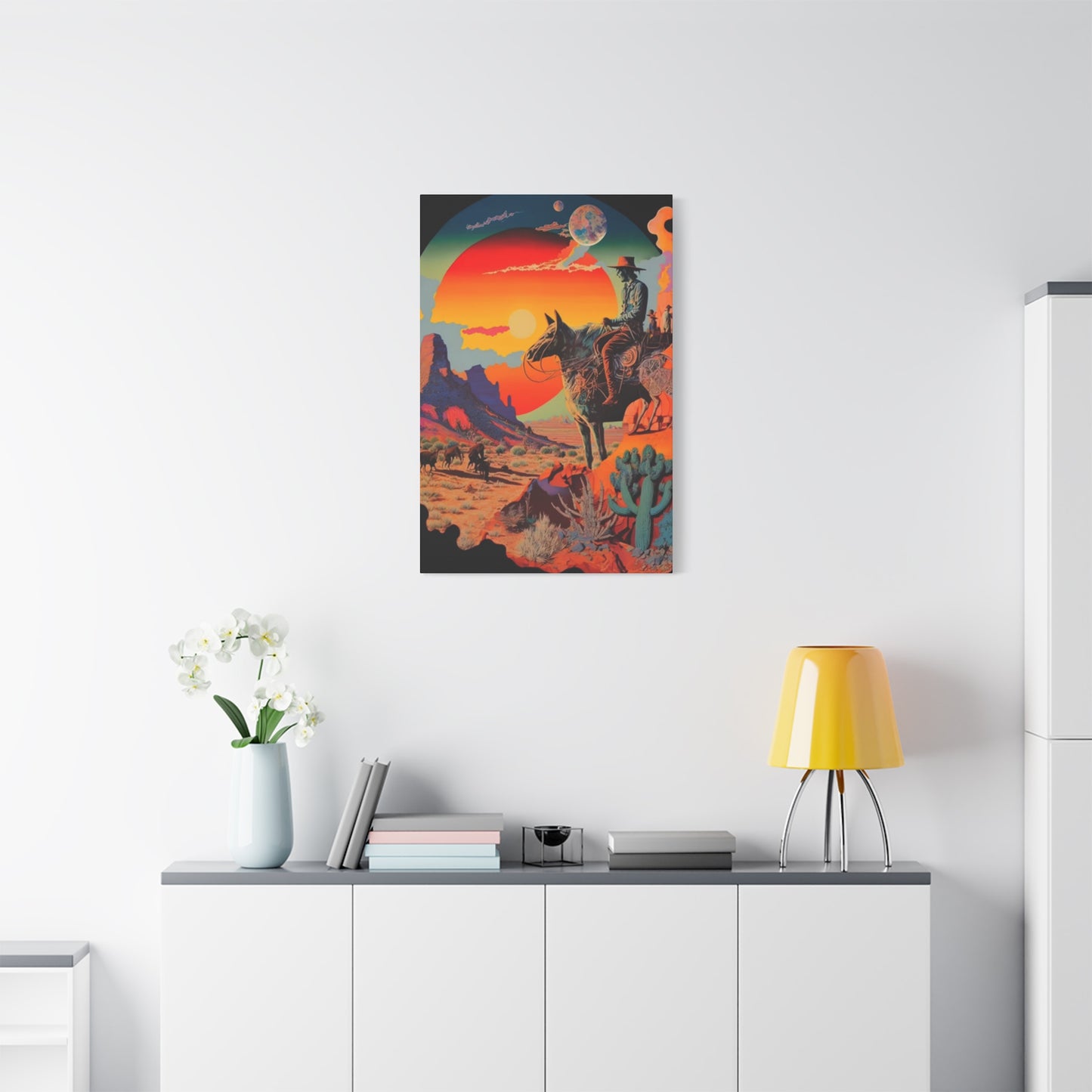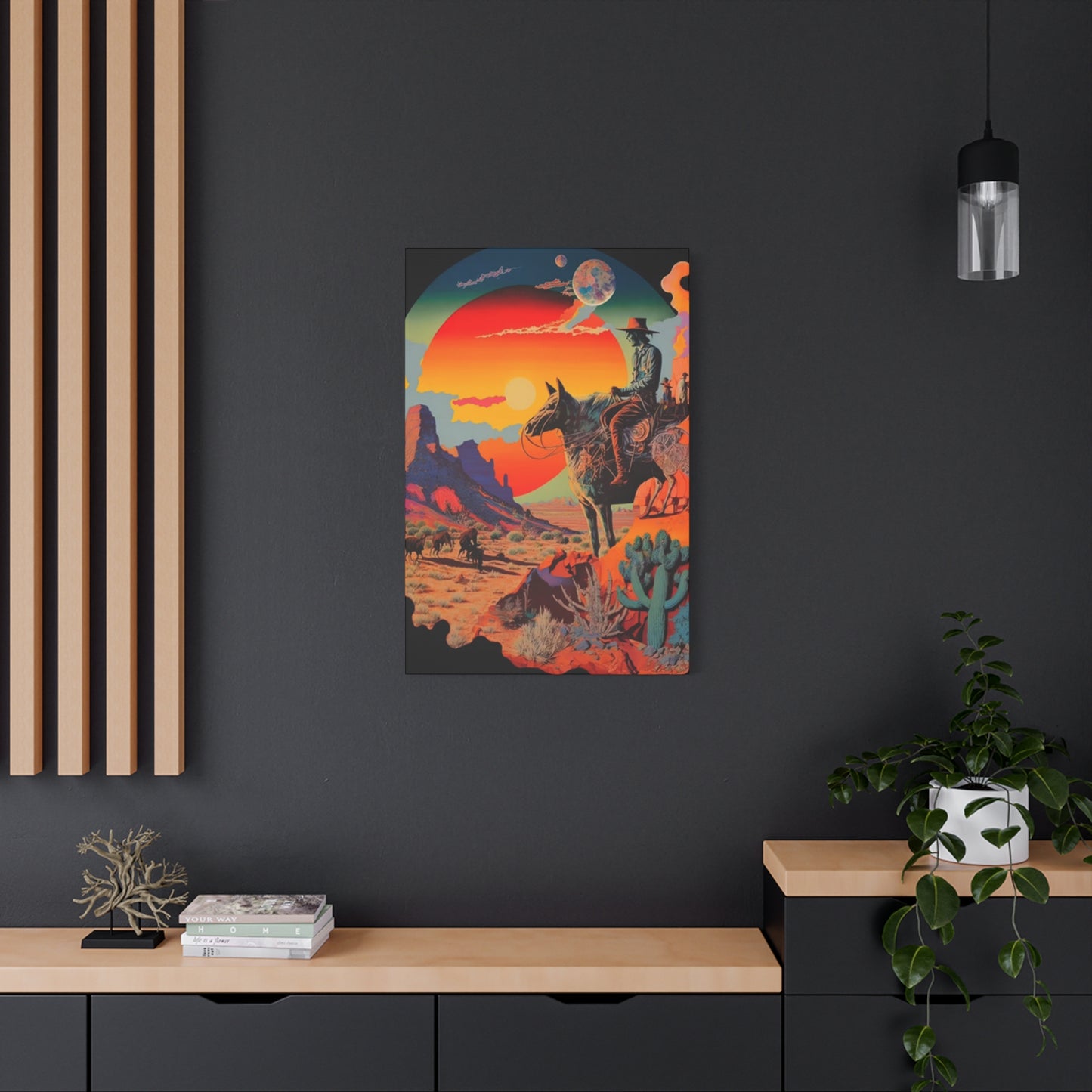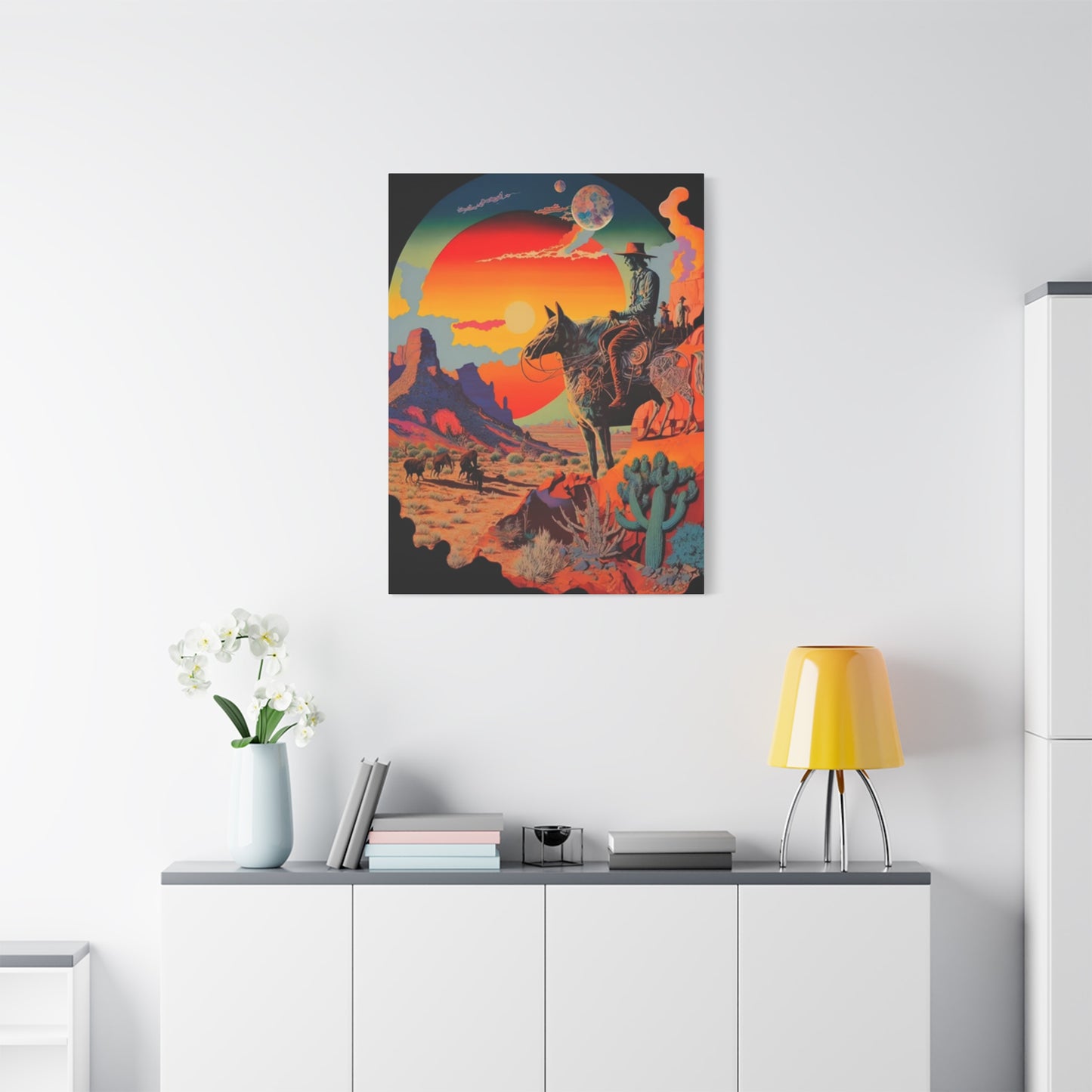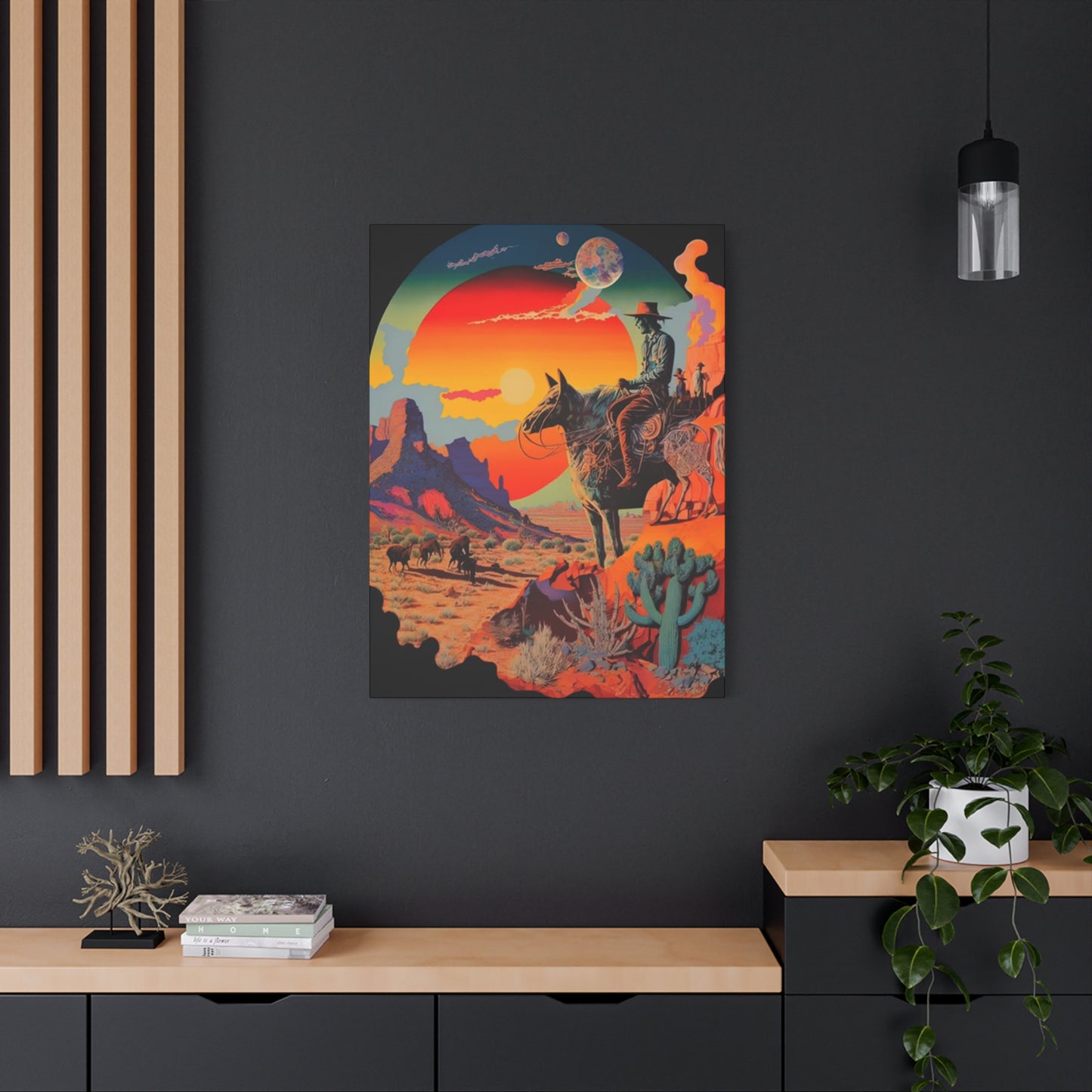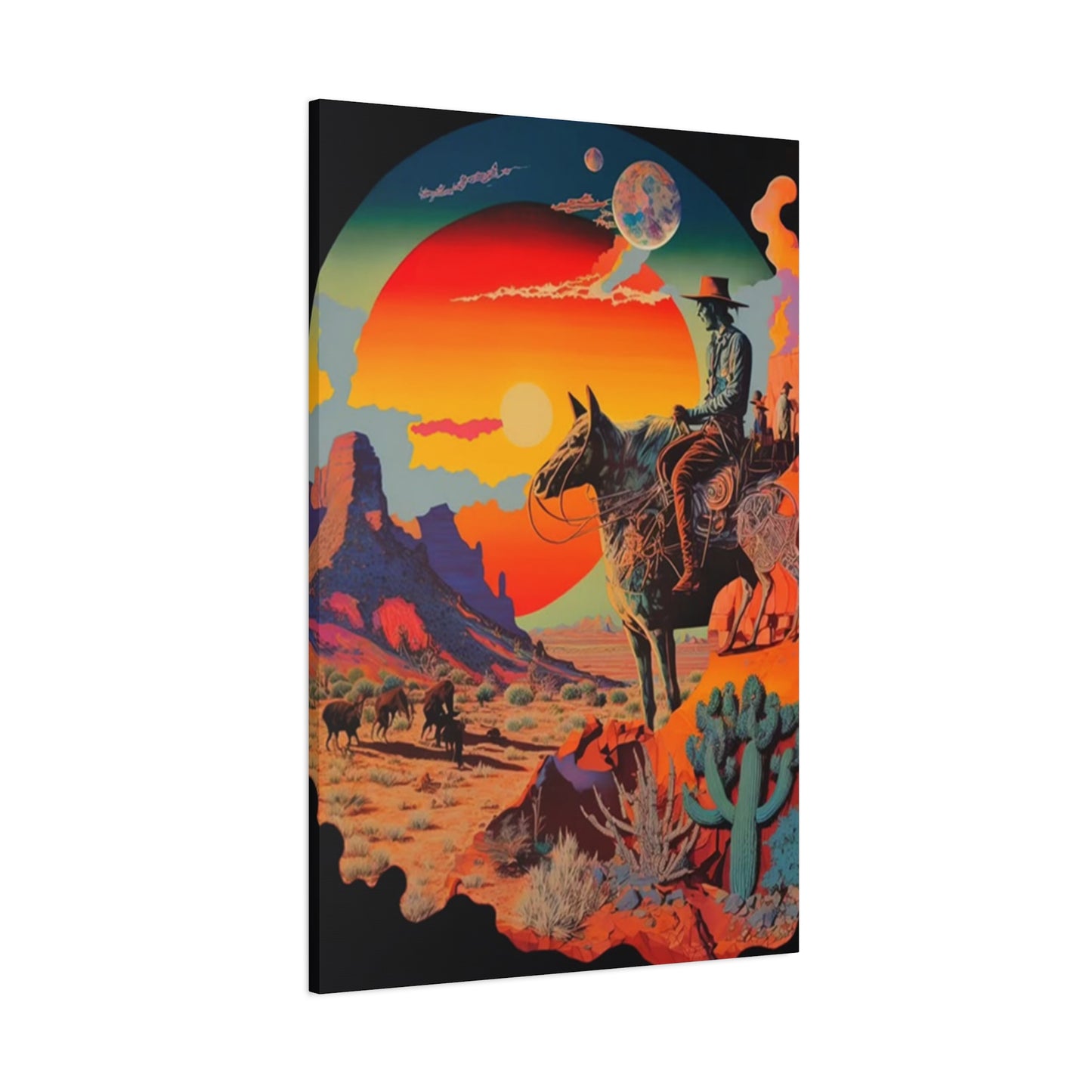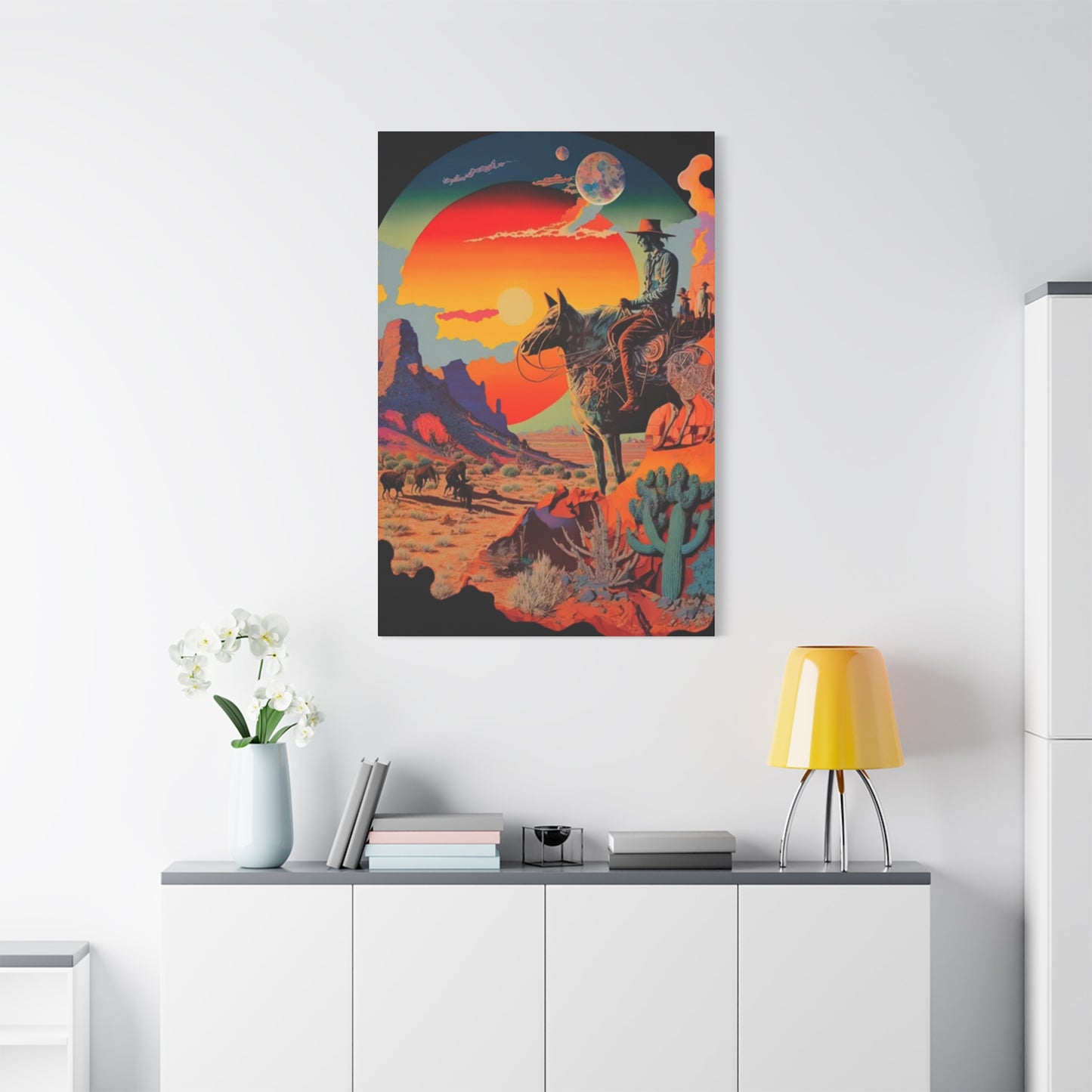Capturing the Majesty of Arizona’s Canyons and Cowboys in Wall Art
There is a profound and enduring mystique surrounding the American West, an almost mythical landscape etched into the collective imagination. It is a realm of vast, open skies, rugged terrains that challenge the horizon, and a spirit of untamed freedom that continues to captivate hearts and minds. At the core of this powerful imagery are two iconic elements: the majestic, awe-inspiring grandeur of the Grand Canyon and the solitary, resilient figure of the cowboy. The canyon represents nature in its most raw and powerful form, a testament to geological time and immense natural beauty.
The cowboy, in turn, symbolizes human perseverance, independence, and a deep, intrinsic connection to the land. When these two symbols converge in the realm of visual art, they create a narrative that is both deeply personal and universally resonant. Grand Canyon scenes with cowboy themes in wall art are not merely decorative pieces; they are portals to another time and place. They are windows into a world where life was simpler yet harder, where every sunrise brought a new challenge and every sunset offered a moment of quiet contemplation against a backdrop of breathtaking beauty.
This form of art captures more than just a landscape; it encapsulates an ethos. It speaks of adventure, of solitude, of the quiet strength required to navigate a world of immense scale and unforgiving beauty. For those who feel a pull towards this iconic era, incorporating such art into their personal environment is a way to honor that spirit and keep its flame alive in their daily lives.
The Enduring Allure of Western-Themed Decor
The appeal of Western-themed decor has transcended generations, proving itself to be a timeless aesthetic rather than a fleeting trend. Its allure lies in its ability to evoke feelings of warmth, authenticity, and a connection to a rich historical narrative. Unlike sterile, minimalist trends that can sometimes feel devoid of personality, Western decor is rich with texture, story, and character. It draws from a palette of natural materials like wood, leather, stone, and metal, creating an atmosphere that is both grounded and inviting. At the heart of this decorative style is the artwork that adorns the walls, and pieces depicting cowboy and canyon scenes are quintessential to achieving this look. This type of wall art serves as a focal point, immediately establishing the theme and mood of a room.
A striking print of a lone rider overlooking the vast expanse of the Grand Canyon can anchor an entire decorative scheme, providing a color palette and a narrative thread to follow. The themes inherent in this art—resilience, freedom, nature's grandeur—resonate on a deep level, offering a sense of escape and inspiration. It is a celebration of heritage and a nod to the pioneering spirit that is a fundamental part of the American story. Whether in a rustic cabin, a suburban home, or even a modern urban loft, cowboy and canyon wall art introduces an element of rugged elegance and timeless charm that continues to captivate and inspire those who appreciate a connection to history and the great outdoors.
A Perfect Pairing: The Cowboy and the Canyon
The visual and thematic marriage of the cowboy and the Grand Canyon in wall art is a masterstroke of artistic synergy. It is a pairing where each element enhances the other, creating a composition that is far more powerful than the sum of its parts. The Grand Canyon, with its immense scale, geological complexity, and breathtaking vistas, represents the untamable power of the natural world. It can be overwhelming in its grandeur, a landscape so vast it almost defies human comprehension. Introducing the figure of the cowboy into this scene provides a crucial sense of scale and a human focal point. Suddenly, the viewer has a relatable presence within the immense landscape, allowing them to imagine themselves in that very position, experiencing that same sense of awe and solitude.
The cowboy, often depicted as a small silhouette against the vast backdrop, underscores the canyon's magnificence while simultaneously embodying the courage and fortitude it takes to exist within it. Conversely, the canyon provides the ultimate stage for the cowboy's story. It is the perfect embodiment of the wilderness he navigates, the challenging environment that forges his resilient character. A cowboy in a simple pasture is one story; a cowboy on the rim of the Grand Canyon is an epic. This perfect pairing allows artists to explore profound themes: humanity's place in nature, the allure of the unknown horizon, the quiet dignity of a life lived in harmony with the land, and the enduring spirit of exploration. It is a visual dialogue between humanity and nature, captured in a single, powerful frame.
Capturing Rugged Magnificence in Arizona-Inspired Art
Arizona is a land of dramatic contrasts, from the sun-scorched Sonoran Desert to the high-altitude forests and, of course, the unparalleled majesty of the Grand Canyon. Art inspired by this unique state is imbued with a sense of rugged magnificence that is difficult to replicate. When this focus on the Arizona landscape is combined with the iconic figure of the cowboy, the result is wall art that is potent with authenticity and raw beauty. These pieces are not just generic western scenes; they are specific, capturing the unique light, the distinctive color palette, and the particular flora of the region. The colors are often a key element: the deep, rusty reds of the canyon walls, the dusty sage green of the scrub, the brilliant turquoise of the sky, and the rich, earthy browns of the cowboy's leather attire.
Artists specializing in this genre often pay meticulous attention to the quality of light, depicting the harsh glare of the midday sun or the soft, warm glow of a sunrise or sunset, which famously paints the canyon in hues of orange, pink, and purple. The "ruggedness" is conveyed not just through the landscape itself but through the depiction of the cowboy. He is often portrayed not as a pristine hero but as a weathered, resilient figure, his clothing dusty from the trail, his posture reflecting a life of hard work and quiet determination. This authenticity is what makes Arizona-inspired cowboy art so compelling. It’s a tribute to the unvarnished beauty of the land and the indomitable spirit of those who call it home.
The Narrative Power of Cowboy Adventures in Canyon Prints
Every piece of wall art depicting a cowboy in the Grand Canyon tells a story. These prints are not static images; they are frozen moments in a larger narrative of adventure, exploration, and survival. The viewer is invited to fill in the blanks, to imagine the journey that led the rider to that particular vista and the path that lies ahead. Is the cowboy a solitary rancher scouting for lost cattle? Is he a weary traveler nearing the end of a long trail? Or is he a young adventurer just beginning his journey, full of hope and ambition as he gazes into the vast unknown? The narrative power of these prints lies in their ability to spark the imagination. The composition itself often directs the story. A cowboy riding towards the viewer might suggest an approaching challenge or a welcome return.
A rider heading away from the viewer, towards the setting sun, evokes themes of departure, the end of an era, or the pursuit of a distant dream. A piece showing a group of cowboys gathered around a campfire on the canyon rim tells a story of camaraderie, of shared hardship and the simple comfort of human connection in a vast wilderness. This storytelling aspect is what elevates cowboy and canyon prints beyond mere decoration. They become conversation starters, pieces of visual fiction that add depth and character to a home. They allow us to connect with a timeless tale of adventure, inviting us to ponder the journeys, both literal and metaphorical, that define the human experience.
Symbolism of the Solitary Rider in Grand Canyon Views
The image of a solitary rider poised on the edge of the Grand Canyon is one of the most powerful and enduring symbols of the American West. It is an archetype laden with meaning, representing a host of ideals that resonate deeply with the human spirit. Primarily, the lone cowboy symbolizes independence and self-reliance. He is a figure who depends on his own skills, instincts, and resilience to navigate a beautiful but unforgiving world. In an increasingly interconnected and complex society, this image of absolute autonomy holds a powerful romantic appeal. He is the master of his own destiny, unburdened by the constraints of modern life. Furthermore, the solitary rider represents a profound connection with nature. He is not merely an observer of the landscape; he is a part of it.
His presence on the canyon rim suggests a comfortable intimacy with the wilderness, a relationship built on respect and understanding. He finds solace and meaning not in the company of crowds, but in the quiet majesty of the natural world. The image also evokes a sense of introspection and contemplation. Gazing out over the immense chasm of the canyon, the rider appears to be lost in thought, pondering life's great questions against a backdrop that puts all human concerns into perspective. This invites the viewer to engage in their own moment of reflection. For many, the solitary rider is a symbol of the quintessential American spirit of individualism and the relentless pursuit of freedom against a boundless frontier.
Dramatic Skies and Cowboy Silhouettes Wall Art
A popular and visually arresting subgenre of cowboy and canyon art focuses on the powerful interplay between dramatic skies and the crisp silhouette of a rider and his horse. This artistic choice strips the scene down to its most essential forms, creating an image that is both timeless and emotionally charged. By reducing the cowboy to a silhouette, the artist removes specific individual details, transforming him into a universal symbol—an everyman representing the spirit of the West. The viewer can more easily project themselves onto this anonymous figure, sharing in his moment of contemplation or adventure. The true star of these pieces, however, is often the sky. Artists use the vast canvas of the heavens above the Grand Canyon to create mood and drama.
A fiery sunset sky, filled with blazing oranges, deep reds, and vibrant purples, can evoke feelings of passion, finality, or the glorious end of a long day's work. A pre-dawn sky, with soft pastel pinks and cool blues, might suggest hope, new beginnings, and the quiet promise of the day ahead. A turbulent, stormy sky with dark, roiling clouds adds a sense of conflict, danger, and imminent challenge, highlighting the cowboy's courage in the face of nature's power. The stark contrast between the dark, grounded silhouette and the dynamic, colorful sky creates a visual tension that is incredibly compelling. This style of wall art is a testament to the power of simplicity, proving that a scene's emotional impact can often be amplified by what is suggested rather than what is explicitly shown.
Arizona's Unique Palette: Colors in Cowboy-Focused Landscapes
The color palette of Arizona is unlike any other in the world, and artists who seek to capture its essence in cowboy-focused landscapes must become masters of its unique hues. This is not the gentle, verdant green of other regions; it is a landscape defined by earth tones, fiery warm colors, and the brilliant, clarifying blue of the sky. The Grand Canyon itself is a symphony of color that changes dramatically with the angle of the sun. The layers of rock reveal shades ranging from deep rust-red and burnt orange to sandy beige, muted purple, and even soft pink. Wall art that authentically captures this scene will reflect this geological rainbow.
The artist must skillfully render the way light and shadow play across these surfaces, deepening the reds in the shade and bleaching the lighter tones in the direct sun. Beyond the canyon, the surrounding flora adds subtle but important colors to the palette. The pale, silvery-green of sagebrush, the deeper olive of juniper trees, and the occasional burst of yellow or red from a desert wildflower provide points of contrast against the dominant earth tones. The cowboy and his horse introduce their own set of colors—the rich, varied browns of leather saddles and chaps, the faded blue of denim, and the tones of the horse's coat, be it black, bay, or palomino. A successful piece of art in this genre harmonizes these elements, creating a visual tapestry that feels authentic to the Arizona setting and transports the viewer to that specific, sun-drenched place.
The Essence of Freedom Embodied in Cowboy Wall Decor
More than any other single concept, the word "freedom" is inextricably linked with the image of the cowboy, and this essence is a primary reason for the enduring popularity of cowboy-themed wall decor. This art serves as a powerful daily reminder of the ideals of open possibility and an unshackled existence. The freedom depicted is multifaceted. Firstly, there is the physical freedom of the open range. The vast, unfenced landscapes of the Grand Canyon region represent a world without boundaries, where one can ride for days without seeing another soul. This visual representation of boundless expanse speaks to a deep-seated human desire to escape confinement and explore. Secondly, there is the freedom from the complexities and pressures of modern society.
The cowboy's life, as romanticized in art, is one of simple purpose, governed by the seasons and the needs of the herd, not by clocks, deadlines, or social obligations. This perceived simplicity and independence are incredibly appealing, offering a mental escape from the routines of contemporary life. The artwork captures this by focusing on the lone figure, master of his own domain, making his own way in the world. Displaying a piece of cowboy wall art is an affirmation of these values. It is a statement of admiration for the spirit of individualism, a celebration of the allure of the open road, and a tribute to the idea that true freedom is found in the vast, quiet places of the world, both on the map and within the human heart.
Grand Canyon's Dramatic Scale with a Cowboy Element
The sheer, overwhelming scale of the Grand Canyon is one of its defining characteristics and one of the greatest challenges for an artist to convey. A photograph or painting can show its beauty, but capturing its immense depth, width, and grandeur is a difficult task. One of the most effective artistic techniques to achieve this is the inclusion of a familiar object to provide a sense of scale—and there is no more fitting object in this context than the cowboy. Placing a cowboy and his horse on the canyon's rim immediately gives the viewer a reference point. Our minds instinctively understand the size of a person and a horse, and by comparing them to the surrounding landscape, we can begin to grasp the truly colossal proportions of the canyon.
The rider, who in any other context would be a commanding presence, is dwarfed by the geological wonder before him. This juxtaposition is visually dramatic and emotionally powerful. It highlights the immensity of nature and the relative smallness of humanity, evoking a sense of humility and awe. This is not to diminish the cowboy, but rather to elevate the landscape he inhabits. His presence makes the canyon feel even larger, more majestic, and more powerful. Wall art that successfully employs this technique does more than just depict a scene; it allows the viewer to feel the scale, to experience a vicarious sense of vertigo and wonder as they mentally stand beside that rider, gazing into the unfathomable abyss.
Enhancing Rustic Atmospheres with Cowboy Canyon Prints
For homes and rooms that embrace a rustic aesthetic, wall art featuring cowboy and canyon prints is not just a complementary addition; it is often a defining element. Rustic decor celebrates natural materials, rugged textures, and a connection to a simpler, more organic way of life. The themes, colors, and textures inherent in cowboy and canyon art align perfectly with this philosophy. The earthy color palette of the artwork—the reds, browns, and ochres of the canyon, the dusty tones of the trail—naturally complements the wood, stone, and leather commonly found in rustic settings. A large canvas print of a cowboy overlooking the canyon can serve as the centerpiece of a living area, tying together a stone fireplace, a leather sofa, and wooden ceiling beams into a cohesive and inviting whole.
The subject matter itself reinforces the rustic theme. The art speaks of the outdoors, of a life lived close to the land, and of rugged individualism, all of which are core tenets of the rustic ideal. These prints can transform a simple room into a themed retreat, a mountain lodge, or a western ranch house, regardless of its actual geographical location. They add a layer of narrative and authenticity, creating an atmosphere that feels curated and personal. In a world of mass-produced, generic decor, cowboy canyon prints offer a touch of timeless, rugged character that is essential for creating a truly memorable and welcoming rustic environment.
The Timeless Appeal of Western Wall Hangings
Trends in home decor come and go with dizzying speed, but the appeal of Western wall hangings remains remarkably constant. This enduring popularity stems from the fact that this art form taps into a timeless narrative and a set of universal values that do not fade with fashion. The imagery of the American West is deeply embedded in cultural mythology, representing ideals of adventure, perseverance, and a pioneering spirit. These are not concepts tied to a particular decade; they are fundamental aspects of the human story that continue to inspire. A piece of art depicting a cowboy against the majestic backdrop of the Grand Canyon is as compelling today as it would have been fifty years ago, and as it will likely be fifty years from now. The aesthetic itself possesses a classic quality.
The natural landscapes, the powerful figure of the horse, and the iconic attire of the cowboy are visually pleasing and historically significant. Unlike abstract art that may require interpretation or contemporary pieces that can quickly feel dated, Western art is grounded in a recognizable and beloved reality. It offers a sense of stability and permanence. For homeowners and collectors, this means that investing in a quality piece of Western wall art is a safe and lasting choice. It is a piece that can be passed down through generations, its story and appeal remaining just as potent for the children and grandchildren as it was for the original owner. It is a connection to the past and a piece of timeless beauty for the future.
The Visual Harmony of Cowboys and Canyons as an Artistic Duo
On a purely compositional level, the pairing of cowboys and canyons offers artists a wealth of opportunities to create visually harmonious and balanced works of art. The contrasting shapes, lines, and textures create a dynamic interplay that is inherently pleasing to the eye. The Grand Canyon is a landscape of strong, horizontal lines—the layers of rock, the flat mesas, the distant horizon. These horizontal elements create a sense of stability, vastness, and calm. The figure of the cowboy and his horse introduces powerful vertical lines, breaking up the horizontal expanse and creating a natural focal point. This interplay between horizontal and vertical is a fundamental principle of strong artistic composition, providing both balance and visual interest. There is also a wonderful contrast in textures.
The canyon offers rough, jagged, and complex textures in the rock faces, while the figures of the cowboy and horse can be rendered with smoother lines or the softer textures of fabric and hide. This textural variety adds depth and realism to the scene. Color theory also plays a key role. The warm, earthy tones of the canyon often contrast beautifully with the cool, expansive blue of the sky. The artist can place the cowboy, often in darker or more neutral tones, at the intersection of these color masses to draw the viewer's eye. This thoughtful arrangement of line, shape, texture, and color is what makes the cowboy and canyon duo so artistically successful. It's a subject that is not only thematically rich but also a perfect vehicle for creating fundamentally sound and beautiful compositions.
Curating a Collection for Lovers of Western Motifs
For true aficionados of the American West, a single piece of wall art is often just the beginning. Curating a collection of pieces centered on Western motifs allows for a deeper and more nuanced exploration of the theme, turning a room or an entire home into a personal gallery that tells a cohesive story. When building such a collection, it's beneficial to think about variety within the central theme of cowboys and canyons. One might start with a large, statement piece—a panoramic photograph or a detailed oil painting of a rider at a classic Grand Canyon overlook. This piece can act as the anchor for the entire collection. From there, one can add smaller, complementary works.
These could include a close-up portrait study of a weathered cowboy's face, capturing the character and wisdom etched there. Another piece might be a dynamic action shot of a cowboy on a galloping horse, emphasizing energy and movement. A collection could also explore different artistic mediums. Pairing a vibrant, colorful painting with a classic black-and-white photograph of the same subject matter can create a fascinating dialogue between the two pieces. One could also seek out art that depicts different times of day or different seasons in the canyon, showing the versatility of the landscape. The key to a successful collection is to ensure that while the pieces are varied, they share a common aesthetic sensibility or emotional tone, creating a harmonious whole that celebrates the multifaceted beauty and enduring spirit of the American West.
Showcasing Western Grit Through Arizona-Themed Wall Art
The concept of "grit" is central to the mythology of the American West, and it is a quality that Arizona-themed wall art is uniquely suited to convey. Grit is more than just toughness; it's a combination of courage, resilience, and unwavering perseverance in the face of adversity. The Arizona landscape, particularly the Grand Canyon, is the perfect visual metaphor for this concept. It is a beautiful but harsh environment, carved by the relentless forces of nature over millennia. It is a land that demands respect and resilience from those who inhabit it. Wall art that aims to capture this grit will often feature specific details.
The cowboy may be shown with dust on his clothes and a determined set to his jaw, not as a pristine hero but as a real person who has contended with the elements. The horse might appear tired but steady, a testament to its endurance. The landscape itself can be depicted under a harsh midday sun or during a brewing storm, emphasizing the challenges of the environment. The focus is on authenticity rather than romanticism. These pieces celebrate the unvarnished reality of a life lived on the edge, finding beauty in the struggle and dignity in the perseverance. By choosing wall art that showcases this Western grit, one makes a statement about the values they admire: strength of character, the ability to endure hardship, and the quiet determination to see a journey through to its end, no matter the obstacles.
Following the Cowboy's Journey Through Grand Canyon Artistry
A compelling way to approach and appreciate wall art depicting cowboys in the Grand Canyon is to view it as a visual representation of a journey. The art doesn't just capture a place; it captures a process, a movement through time and terrain. Different pieces of art can be seen as different chapters in the cowboy's story. An image of a rider descending into the canyon on a narrow, winding trail represents the beginning of a challenge, a descent into the unknown. The composition would emphasize the steep, treacherous path and the immense walls towering on either side.
A piece showing the cowboy fording the Colorado River at the bottom of the canyon would be the heart of the journey, a moment of struggle and crossing a significant barrier. The focus would be on the power of the water and the strength of the horse and rider. Finally, an image of the cowboy ascending the other side or standing victorious on the opposite rim would signify the completion of the journey, a moment of triumph and reflection. Looking at the artwork through this narrative lens adds a layer of depth and engagement. It allows the viewer to connect with the cowboy's experience on a more personal level, to feel the challenges and triumphs of his passage through one of the world's most incredible landscapes. It transforms a static image into a dynamic story of perseverance and accomplishment.
Scenic Wall Decor with a Distinctly Western Attitude
What separates generic scenic wall decor from pieces with a "Western attitude"? The difference lies in the mood, the subject matter, and the underlying ethos the artwork conveys. While a simple landscape photograph of the Grand Canyon can be beautiful, it becomes distinctly Western when it includes elements that speak to the region's human history and cultural identity. The inclusion of a cowboy, a rustic fence line, or even a distant herd of cattle infuses the scene with a narrative and a specific point of view. The "attitude" is one of rugged independence and a deep, unsentimental connection to the land. This is not a manicured, pastoral landscape; it is wild, untamed, and magnificent.
The art reflects this by often favoring dramatic lighting, vast, open compositions, and a focus on the raw, natural textures of the environment. The Western attitude is also one of quiet confidence. The cowboy in these scenes is not boastful or loud; he is a figure of calm competence, at home in his challenging surroundings. The artwork mirrors this with a sense of groundedness and authenticity. It avoids overly sentimental or romanticized depictions in favor of a more honest, respectful portrayal of the relationship between man and nature. Choosing scenic wall decor with this distinct attitude is a way to bring not just the beauty of the West into a home, but its spirit as well—a spirit of resilience, freedom, and profound respect for the wild.
Celebrating the Art of the West: Grand Canyon Cowboys
The genre of art focusing on Grand Canyon cowboys is a significant and celebrated branch of the broader category of "Art of the West." This tradition has a long and storied history, evolving from the early expeditionary painters who first documented the region's wonders for a fascinated public, to the classic illustrators who defined the cowboy mythos in the 20th century, and finally to the contemporary painters and photographers who continue to explore and reinterpret these iconic themes today. This art is celebrated for its ability to capture a quintessential aspect of the American experience.
It is a genre that values technical skill, whether it's the painter's ability to render the complex play of light on canyon walls or the photographer's talent for capturing a fleeting, perfect moment of harmony between rider and landscape. Beyond the technical aspects, this art is celebrated for its narrative depth. The artists are storytellers, using their chosen medium to convey tales of adventure, solitude, and the human spirit's interaction with a sublime natural world. Art collectors and enthusiasts are drawn to this genre for its emotional resonance and its connection to history. Owning a piece of this art is like owning a piece of the story of the West. It is a tribute to the artists who have dedicated their careers to capturing its unique beauty and to the enduring legacy of the cowboys who traversed its majestic landscapes.
Bringing the Wild West Ambiance into Your Home
Creating a "Wild West ambiance" in a home is about more than just decor; it's about cultivating a feeling, an atmosphere that transports and inspires. Wall art is arguably the most powerful tool for achieving this transformation. A carefully chosen piece depicting a cowboy in the Grand Canyon can single-handedly set the tone for an entire room, infusing it with a sense of adventure and rustic charm. To effectively bring this ambiance home, consider the scale of the artwork. A large, panoramic print can dominate a wall, acting as a window into the vast, open landscapes of the West and making a room feel larger and more open.
Groupings of smaller pictures can tell a more detailed story, perhaps showing different aspects of a cowboy's life or various views of the canyon. The placement of the art is also key. Hanging a dramatic sunset scene in a dining area can create a warm, inviting atmosphere for gatherings. Placing a contemplative piece showing a lone rider in a quiet study or reading nook can foster a sense of peace and introspection. The ambiance is completed by coordinating the art with other elements. The colors from the print can be picked up in throw pillows, rugs, or other accessories. Natural textures like wood, leather, and woven fabrics will further enhance the Western feel.
The Versatility of Cowboy and Canyon Imagery
While strongly associated with rustic and traditional decor, the imagery of cowboys and the Grand Canyon is surprisingly versatile and can be incorporated into a wide range of decorative styles. The key lies in the specific artistic interpretation of the subject matter and the way it is framed and presented. For a modern or minimalist home, a black-and-white photograph of a cowboy silhouette against the canyon's geometric layers can be a stunning choice. The lack of color emphasizes form and texture, creating a sophisticated and graphic statement piece that complements a clean, neutral palette. In a bohemian or eclectic setting, a more colorful and expressive painting, perhaps with a slightly abstract or impressionistic style, can add a touch of adventurous spirit and narrative depth.
The rich, earthy tones would blend well with the layered textures and global patterns common in bohemian decor. Even in an industrial-style loft with exposed brick and metal, a large, unframed canvas print of a gritty, realistic cowboy scene can provide a powerful and unexpected contrast, introducing an element of organic, human history into the urban environment. The timelessness of the subject matter allows it to transcend stylistic boundaries. The themes of freedom, nature, and resilience are universal, and when presented through a contemporary artistic lens, they can feel fresh and relevant in almost any context, proving that the spirit of the West is not confined to a single decorative style.
From Photography to Painting: Mediums for Western Art
The iconic scenes of cowboys in the Grand Canyon are brought to life through a variety of artistic mediums, each offering a unique perspective and aesthetic. Photography, both in color and black-and-white, excels at capturing the realism and majestic detail of the landscape. A high-resolution photograph can make the viewer feel as if they are truly there, able to see every crevice in the canyon wall and every detail of the cowboy's leather gear.
Black-and-white photography, in particular, emphasizes texture, light, and shadow, often creating a timeless, nostalgic, and dramatic mood. Oil and acrylic paintings offer a different kind of experience. Painters are not bound by reality in the same way photographers are. They can exaggerate colors to enhance the mood of a sunset, use expressive brushstrokes to convey the energy of a galloping horse, or simplify forms to create a more symbolic or mythic image. Painting allows for a deeper level of emotional interpretation, conveying the artist's personal feelings about the scene.
Watercolor is another popular medium, often used to create a softer, more atmospheric feel. The translucent quality of watercolor is perfect for capturing the hazy distances within the canyon and the delicate light of dawn or dusk. Finally, prints and posters make this art accessible to a wider audience, ranging from high-quality giclée prints that replicate the look of an original painting to vintage-style posters that evoke a sense of historical adventure. Each medium provides a different lens through which to view the timeless drama of the cowboy and the canyon.
Compositional Techniques in Grand Canyon Cowboy Art
Artists use a variety of compositional techniques to make their depictions of Grand Canyon cowboys compelling and visually engaging. One of the most common is the "rule of thirds," where the key elements—such as the horizon or the figure of the cowboy—are placed off-center, along invisible lines that divide the frame into thirds. This creates a more dynamic and natural-looking composition than placing the subject directly in the middle. Leading lines are another powerful tool. An artist might use the line of a canyon rim, a winding trail, or a rustic fence to draw the viewer's eye through the image and towards the focal point, which is often the cowboy. This creates a sense of depth and guides the viewer's journey through the scene. Framing is also used effectively.
An artist might position the main scene so that it is viewed through an archway of rock or between two gnarled juniper trees in the foreground. This creates a sense of intimacy and context, as if the viewer is peeking into a private moment. The use of negative area—the empty parts of the composition, like a vast expanse of sky—is crucial for conveying the sense of openness and solitude that is so central to the theme. By mastering these and other compositional principles, artists can transform a simple scene into a balanced, dynamic, and emotionally resonant work of art that captures and holds the viewer's attention.
Seasonal Depictions: The Canyon and Cowboy Through the Year
While many classic depictions of the Grand Canyon show it under a blazing summer sun, artists who explore the region's seasonal changes offer a richer and more varied perspective. Each season brings a unique mood, color palette, and set of challenges, all of which can be reflected in wall art featuring the ever-present cowboy. A spring scene might be filled with a sense of renewal. The light would be softer, and the artist might include touches of new green growth and perhaps a few hardy wildflowers. The sky might hold the promise of a gentle spring rain, and the cowboy's posture could suggest the start of a new season of work. Summer is the season of intensity. The colors are at their most vibrant, the sun is harsh, and the shadows are deep and dark.
Art from this season often conveys the heat and the difficulty of the trail, emphasizing the cowboy's toughness and endurance. Autumn brings a softer, golden light and a feeling of melancholy beauty. The angle of the sun is lower, creating long shadows and highlighting the warm, golden tones in the landscape. It's a time of harvest and preparation, and a cowboy might be depicted moving his herd before the onset of winter. Winter scenes are perhaps the most dramatic and rare. A dusting of snow on the canyon rims creates a breathtaking contrast with the red rock, transforming the familiar landscape into a quiet, magical world. A cowboy bundled against the cold, his breath visible in the crisp air, becomes a powerful symbol of survival and resilience against the harshest elements. Exploring these seasonal depictions can add wonderful variety to a collection of Western art.
A Lasting Legacy: The Iconic West in Modern Decor
The integration of the iconic American West into modern decor is a testament to the lasting legacy of its imagery and ideals. Far from being a relic of the past, the cowboy and the Grand Canyon continue to serve as powerful symbols that resonate in the contemporary world. In modern decorative schemes, which often prioritize clean lines, uncluttered surfaces, and a sense of purpose, a single, powerful piece of Western wall art can provide a necessary focal point and a touch of organic soul. It acts as a counterbalance to the sleekness of modern furnishings, introducing elements of history, nature, and human endeavor. The key to successfully incorporating this art is intentionality.
Instead of a cluttered, theme-park approach, the modern method is to use a single, high-quality piece as a statement. A large, beautifully framed photograph of a lone rider or an expressive, semi-abstract painting of the canyon can command a room without overwhelming it. This approach acknowledges the art not just as a decorative element but as a piece of cultural significance. It celebrates the legacy of the West not by recreating it literally, but by honoring its spirit—a spirit of independence, connection to the land, and timeless beauty. It demonstrates that the core themes embodied by the cowboy and the canyon are universal and can be appreciated in any era, providing a touchstone of authenticity and inspiration in the modern home.
Conclusion:
The enduring fascination with wall art depicting Grand Canyon scenes and cowboy themes is a powerful reflection of a collective longing for the ideals the American West represents. It is more than an appreciation for beautiful landscapes or a fondness for a historical figure; it is a connection to the fundamental narratives of freedom, resilience, and humanity's profound relationship with the natural world. Throughout the explorations of this genre, a consistent thread emerges: this art serves as a window, not into a bygone era, but into a timeless state of mind.
The image of the solitary rider, set against the geological immensity of the canyon, encapsulates a story of self-reliance and quiet contemplation that feels more relevant than ever in our fast-paced, hyper-connected world. It is a visual pause, an invitation to consider the vastness of the world and our place within it. The versatility of this art form is remarkable. It finds a home not only in rustic lodges and traditional dens but also provides a potent, soulful contrast in the most modern and minimalist of settings. Whether captured through the stark realism of a photograph, the emotive strokes of a painting, or the graphic power of a silhouette against a sunset, the core message remains the same.
It speaks of the courage to face an unbroken horizon, the dignity of a life lived with purpose, and the humbling, awe-inspiring beauty of a world untouched by artifice. For those who choose to display these pieces in their homes, it is an act of curating their own personal frontier. It is a daily affirmation of the spirit of adventure, a tribute to the grit and determination that defines the cowboy archetype, and a constant, beautiful reminder of the majestic, untamed wilderness that lies both in the heart of the American landscape and in the depths of the human spirit. The appeal of this art is as vast and enduring as the canyon itself, promising to captivate and inspire for generations to come.

















